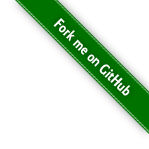#259 Flask Web Development
Book notes - Flask Web Development, By Miguel Grinberg, published by O’Reilly.
Notes
Table of Contents - Highlights
Part I. Introduction to Flask
1. Installation
- Using Virtual Environments
- Installing Python Packages with pip
2. Basic Application Structure
- Initialization
- Routes and View Functions
- Server Startup
- A Complete Application
- The Request-Response Cycle
- Application and Request Contexts
- Request Dispatching
- Request Hooks
- Responses
- Flask Extensions
- Command-Line Options with Flask-Script
3. Templates
- The Jinja2 Template Engine
- Rendering Templates
- Variables
- Control Structures
- Twitter Bootstrap Integration with Flask-Bootstrap
- Custom Error Pages
- Links
- Static Files
- Localization of Dates and Times with Flask-Moment
4. Web Forms
- Cross-Site Request Forgery (CSRF) Protection
- Form Classes
- HTML Rendering of Forms
- Form Handling in View Functions
- Redirects and User Sessions
- Message Flashing
5. Databases
- SQL Databases
- NoSQL Databases
- SQL or NoSQL?
- Python Database Frameworks
- Database Management with Flask-SQLAlchemy
- Model Definition
- Relationships
- Database Operations
- Creating the Tables
- Inserting Rows
- Modifying Rows
- Deleting Rows
- Querying Rows
- Database Use in View Functions
- Integration with the Python Shell
- Database Migrations with Flask-Migrate
- Creating a Migration Repository
- Creating a Migration Script
- Upgrading the Database
6. Email
- Email Support with Flask-Mail
- Sending Email from the Python Shell
- Integrating Emails with the Application
- Sending Asynchronous Email
7. Large Application Structure
- Project Structure
- Configuration Options
- Application Package 78
- Using an Application Factory
- Implementing Application Functionality in a Blueprint
- Launch Script
- Requirements File
- Unit Tests
- Database Setup
Part II. Example: A Social Blogging Application
8. User Authentication
- Authentication Extensions for Flask
- Password Security
- Hashing Passwords with Werkzeug
- Creating an Authentication Blueprint
- User Authentication with Flask-Login
- Preparing the User Model for Logins
- Protecting Routes
- Adding a Login Form
- Signing Users In
- Signing Users Out
- Testing Logins
- New User Registration
- Adding a User Registration Form
- Registering New Users
- Account Confirmation
- Generating Confirmation Tokens with itsdangerous
- Sending Confirmation Emails
- Account Management
9. User Roles
- Database Representation of Roles
- Role Assignment
- Role Verification
10. User Profiles
- Profile Information
- User Profile Page
- Profile Editor
- User-Level Profile Editor
- Administrator-Level Profile Editor
- User Avatars
11. Blog Posts
- Blog Post Submission and Display
- Blog Posts on Profile Pages
- Paginating Long Blog Post Lists
- Creating Fake Blog Post Data
- Rendering Data on Pages
- Adding a Pagination Widget
- Rich-Text Posts with Markdown and Flask-PageDown
- Using Flask-PageDown
- Handling Rich Text on the Server
- Permanent Links to Blog Posts
- Blog Post Editor
12. Followers
- Database Relationships Revisited
- Many-to-Many Relationships
- Self-Referential Relationships
- Advanced Many-to-Many Relationships
- Followers on the Profile Page
- Query Followed Posts Using a Database Join
- Show Followed Posts on the Home Page
13. User Comments
- Database Representation of Comments
- Comment Submission and Display
- Comment Moderation
14. Application Programming Interfaces
- Introduction to REST
- Resources Are Everything
- Request Methods
- Request and Response Bodies
- Versioning
- RESTful Web Services with Flask
- Creating an API Blueprint
- Error Handling
- User Authentication with Flask-HTTPAuth
- Token-Based Authentication
- Serializing Resources to and from JSON
- Implementing Resource Endpoints
- Pagination of Large Resource Collections
- Testing Web Services with HTTPie
Part III. The Last Mile
15. Testing
- Obtaining Code Coverage Reports
- The Flask Test Client
- Testing Web Applications
- Testing Web Services
- End-to-End Testing with Selenium
- Is It Worth It?
16. Performance
- Logging Slow Database Performance
- Source Code Profiling
17. Deployment
- Deployment Workflow
- Logging of Errors During Production
- Cloud Deployment
- The Heroku Platform
- Preparing the Application
- Testing with Foreman
- Enabling Secure HTTP with Flask-SSLify
- Deploying with git push
- Reviewing Logs
- Deploying an Upgrade
- Traditional Hosting
- Server Setup
- Importing Environment Variables
- Setting Up Logging 2
18. Additional Resources
- Using an Integrated Development Environment (IDE)
- Finding Flask Extensions
- Flask-Babel: Internationalization and localization support
- Flask-RESTful: Tools for building RESTful APIs
- Celery: Task queue for processing background jobs
- Frozen-Flask: Conversion of a Flask application to a static website
- Flask-DebugToolbar: In-browser debugging tools
- Flask-Assets: Merging, minifying, and compiling of CSS and JavaScript assets
- Flask-OAuth: Authentication against OAuth providers
- Flask-OpenID: Authentication against OpenID providers
- Flask-WhooshAlchemy: Full-text search for Flask-SQLAlchemy models based on Whoosh
- Flask-KVsession: Alternative implementation of user sessions that use server-side storage
- Getting Involved with Flask
Getting the Example Source
git clone https://github.com/miguelgrinberg/flasky.git example_source
Credits and References
- Flask Book - Companion site for the Flask book and training videos by Miguel Grinberg
- Flask Web Development
- Errata for Flask Web Development
- Flask Web Development Example - github
- Flask documentation
